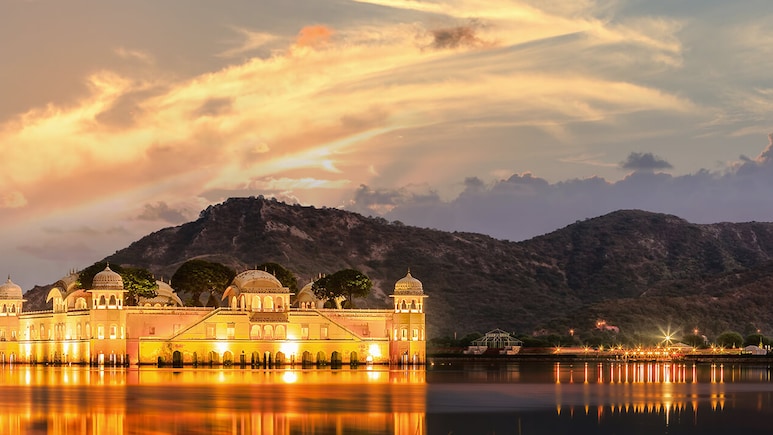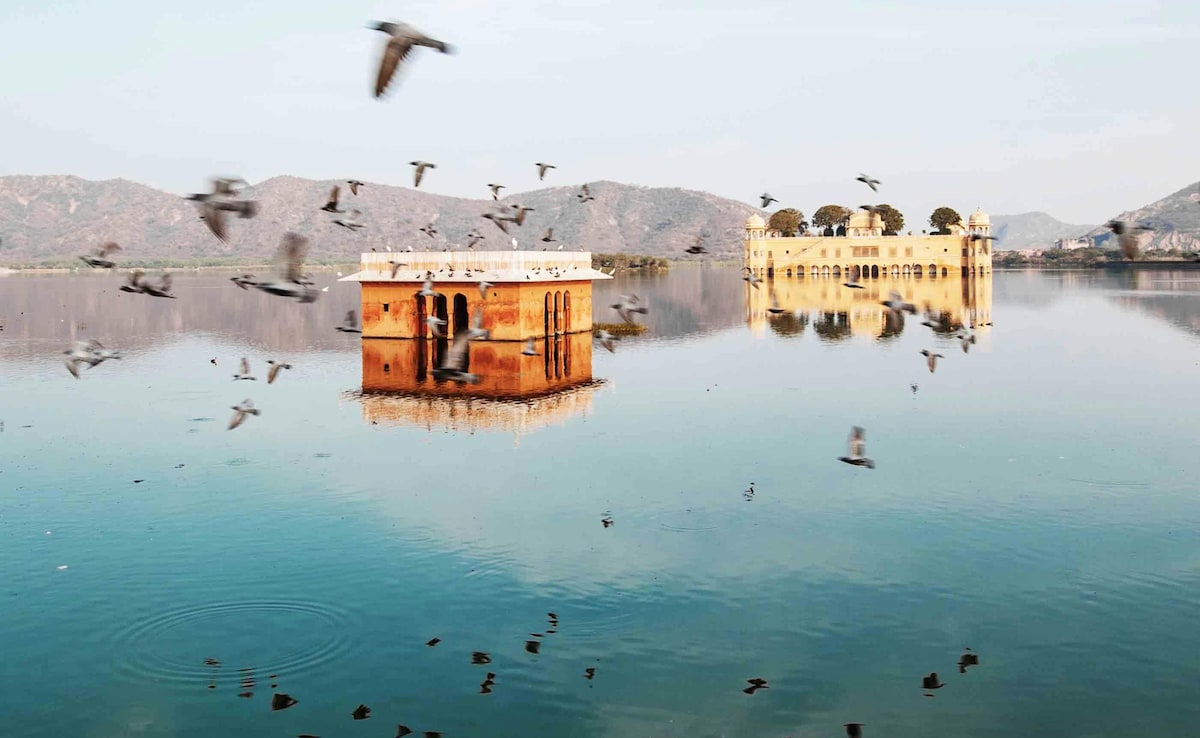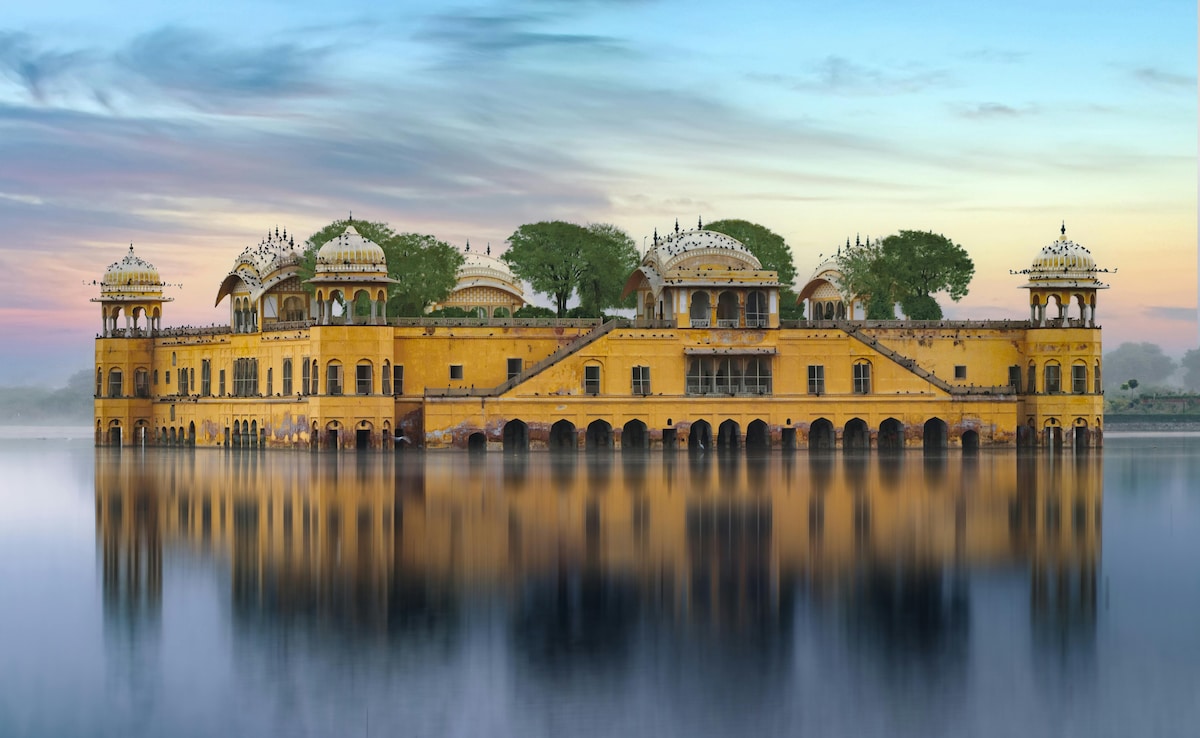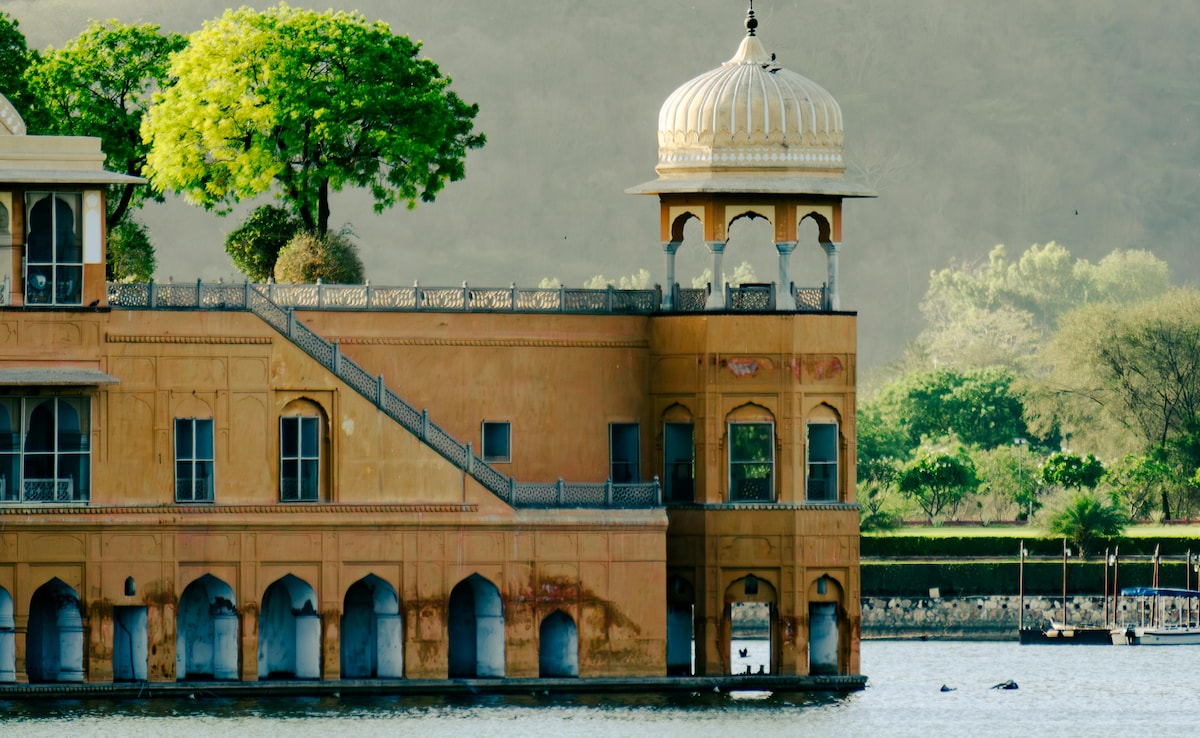
If you have ever driven along the Jaipur-Amer Road, you have likely paused to admire Jal Mahal - one of Jaipur's most iconic yet mysterious landmarks. Its red sandstone walls glow in the sun, seemingly floating on the calm waters of Man Sagar Lake. This palace is more than just a pretty sight. It holds centuries of history, architectural brilliance, and ecological revival, drawing thousands of visitors every year. But few know the stories hidden beneath its surface. Why is most of the palace underwater? Can you go inside? What makes its architecture so unique? Here, we will explore some of the most fascinating facts about Jal Mahal, answering popular questions and revealing the palace's lesser-known secrets.
Whether you are planning a trip or simply love India's cultural gems, this guide will help you see Jal Mahal in a whole new light.
Where Is Jal Mahal Located?
Jal Mahal, literally meaning Water Palace, is one of Jaipur's most enchanting landmarks. It is nestled between Jaipur city and Amer Fort, along the scenic Jaipur-Amer Road, just 4 kilometres from the city centre. It is surrounded by the Aravalli hills, with views of Nahargarh Fort and the lush Kanak Vrindavan Garden nearby.
This palace was built in the 18th century as a royal retreat, making a stunning example of Rajput and Mughal architecture. What makes it truly unique is the location - right in the middle of Man Sagar Lake, giving the illusion that it floats on water.
Who Built Jal Mahal And Why?
Jal Mahal was originally constructed in 1699 by Maharaja Sawai Pratap Singh as a leisure retreat for duck hunting and royal picnics. Later, Maharaja Jai Singh II of Amber renovated and expanded the palace in the 18th century, blending Mughal and Rajput architectural styles. Interestingly, some historians also credit Maharaja Madho Singh with its construction.
Unlike other palaces, Jal Mahal was never meant to be a residence. It was designed as a pleasure palace - a place for the royals to relax and enjoy nature. Its location in the middle of the lake made it ideal for watching birds and escaping the summer heat.
Also Read: Jaipur Travel Guide: Follow This Ultimate Cheatsheet For A Memorable Trip In The Pink City

Photo Credit: Pexels
Here Are 6 Fascinating Facts About Jal Mahal, Jaipur's Floating Palace:
1. Submerged Architecture That Defies Logic
Jal Mahal's most striking feature is its illusion of floating. The palace has five storeys, but when Man Sagar Lake is full, four remain submerged, leaving only the top floor visible. This architectural feat was not accidental. It was designed to keep the lower levels cool and hidden, while the upper terrace remained accessible for leisure.
Despite being underwater for most of the year, the structure has stood strong for over 250 years, thanks to its robust sandstone construction and traditional sealing techniques. The submerged floors are said to have intricately carved corridors and chambers, though they remain out of public view.
2. Royal Origins Rooted In Leisure, Not Legacy
Jal Mahal was commissioned around 1699 by Maharaja Sawai Pratap Singh, and later expanded by Maharaja Jai Singh II in the 18th century. Unlike other palaces built for residence or governance, Jal Mahal was intended as a pleasure retreat. It was part of a larger tradition of island resorts in Rajputana, where rulers would escape the heat and bustle of court life.
3. Chameli Bagh: A Rooftop Garden With Royal Flair
Atop Jal Mahal lies Chameli Bagh, a lush terrace garden that once hosted birdwatchers, musicians, and royal guests. Designed in the charbagh style, it features four quadrants with raised marble flower beds, lotus-shaped fountains, and arched walkways. Each corner of the garden is adorned with Tibaris, ornate pavilions in the Bengal roof style, each with its own theme. From the Badal Mahal Tibari with monsoon motifs to the Raas Niwas Tibari depicting Krishna's romantic escapades, the garden is a sensory blend of architecture, mythology, and nature.
4. Traditional Waterproofing That Still Works
One of the reasons Jal Mahal has survived centuries of submersion is its organic waterproofing technique. Restoration experts used a mix of lime mortar, jaggery, guggal resin, and methi powder - a formula rooted in ancient Indian construction science.
This blend not only sealed the walls but also allowed them to breathe, preventing long-term damage. Even today, the submerged floors show minimal seepage, a testament to the ingenuity of traditional Rajasthani craftsmanship.
5. Bird Sanctuary In The Heart Of The City
Thanks to ecological restoration, the area around Jal Mahal has become a thriving bird sanctuary. Species like coots, pochards, kestrels, and even flamingos visit the wetlands of Man Sagar Lake, especially during winter migration.
The palace's quiet surroundings and improved water quality have made it a peaceful haven for birdwatchers and nature lovers. The nearby Jal Mahal nursery has planted over one lakh trees, further supporting biodiversity.
6. Eco Revival That Brought The Lake Back To Life
Man Sagar Lake, once a dumping ground for sewage and industrial waste, has undergone a remarkable transformation. Under a public-private partnership, restoration efforts began in the early 2000s.
- Sewage treatment plants were built to divert and clean wastewater
- A sedimentation basin was added to filter runoff from nearby hills
- Lake dredging increased depth and improved oxygen levels
- Migratory birds returned, and aquatic life began to thrive again
Today, the lake is a symbol of urban ecological revival and heritage conservation.
Also Read: 7 Fascinating Hill Forts Of India For A Lesson In History
Is Jal Mahal Haunted?
Despite rumours floating online, there are no verified stories of Jal Mahal being haunted. It is a peaceful heritage site with no history of paranormal activity. The palace's mysterious appearance, half-submerged and closed to the public, may fuel curiosity, but it remains a serene and scenic spot.
Is Jal Mahal Open To The Public?
The answer is no. Jal Mahal is not open for public entry at the moment. While you can admire it from the lakeside promenade or take photographs, entry into the palace is restricted due to conservation and security concerns. There were plans to open it under a public-private partnership, but access remains limited.
Can You Take A Boat To Jal Mahal?
Boat rides to Jal Mahal were once available, allowing visitors to get closer to the palace. However, boat services are currently suspended due to restricted access and conservation efforts. You can still enjoy the view from the promenade, and there are plans to revive eco-friendly boating in the future.
Also Read: Planning A Trip To Amer Fort? These 5 Facts Will Spark Your Curiosity

Photo Credit: Pexels
How To Reach Jal Mahal, Jaipur?
1. By Road:
Jal Mahal is located approximately 4 kilometres from Jaipur city centre, making it a short and pleasant drive. You can hire a taxi, hop into an auto-rickshaw, or take a local bus from major points like Sindhi Camp Bus Stand or Jaipur Railway Station.
2. Nearest Landmark:
Jal Mahal lies directly on the route to Amer Fort, one of Jaipur's most visited attractions. This makes it a convenient stop during your Golden Triangle itinerary or a day trip exploring Jaipur's forts and palaces. Many tour operators include Jal Mahal as a photo stop enroute to Jaigarh Fort or Nahargarh Fort, so you can easily weave it into your sightseeing plan.
3. Best Time To Visit:
The best time to visit Jal Mahal is during:
- Early morning for soft light, fewer crowds, and a peaceful atmosphere
- Sunset for golden hour reflections on the lake and cooler temperatures
- Avoid visiting during peak afternoon hours, especially in summer, as the area can get hot and crowded.
4. Nearby Attractions:
If you are planning a half-day around Jal Mahal, here are some nearby spots worth exploring:
- Kanak Vrindavan Garden: A beautifully landscaped garden with fountains and temples, just a few minutes away
- Jaipur Wax Museum: Located inside Nahargarh Fort, it features lifelike statues of historical and Bollywood figures
- Nahargarh Fort: Offers panoramic views of Jaipur and is especially stunning at sunset
- Amer Fort: A UNESCO World Heritage Site known for its mirror palace and elephant rides
- Man Sagar Lake Promenade: A peaceful walkway with benches, street food stalls, and birdwatching opportunities
Bonus: A Quick Itinerary For One Day Jal Mahal Tour
- Start with sunrise at Jal Mahal
- Head to Amer Fort for history and architecture
- Lunch at a rooftop cafe in the old city
- End with sunset at Nahargarh Fort
Also Read: 5 UNESCO World Heritage Sites In India That Are Extra Magical During The Monsoon

Photo Credit: Pexels
Why Is Jal Mahal So Popular On Instagram?
Jal Mahal's floating illusion, sunset views, and symmetrical beauty make it a favourite for photographers and influencers. The palace looks especially magical during golden hour, when the red sandstone glows against the water. While you cannot go inside, the lakeside promenade offers plenty of angles for stunning shots. It is one of Jaipur's most Instagrammed landmarks.
So, the next time you are in Jaipur, take a moment to pause and admire the floating wonder on Man Sagar Lake. And if you have any memory or photo of Jal Mahal, share it with us on social media.
Track Latest News Live on NDTV.com and get news updates from India and around the world

